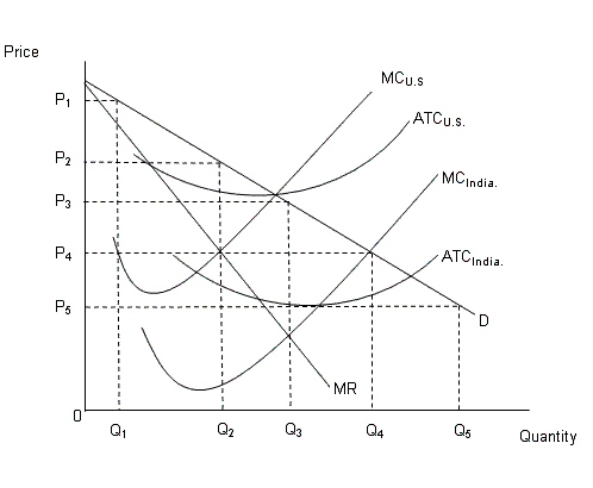The figure given below shows the demand curve in the U.S.and the cost curves in U.S.and India. Figure: 15.4  In the figure:
In the figure:
MC: Marginal cost curve
ATC: Average total cost curve
D: Demand curve in the U.S.
MR: Marginal revenue curve in the U.S.
In Figure 15.4, the price and quantity of the good if produced by India would be _____ and _____ respectively.
Definitions:
Tradable Pollution
A system where companies or countries can buy or sell allowances to emit a certain amount of pollutants, with the aim of reducing overall emissions.
Cap-And-Trade
An environmental policy tool that limits greenhouse gas emissions by allocating emission allowances and permitting the trading of these allowances among emitters.
Market Approach
An economic method that determines the value of a business, business ownership interest, or security using one or more methods that compare the subject to similar businesses, business ownership interests, or securities that have been sold.
Genuine Progress Indicator
An economic measure that accounts for welfare, incorporating factors like environmental health and social well-being, offering an alternative to GDP.
Q7: The financial crises of the 1990s have
Q13: The marginal-factor cost (MFC)is the:<br>A)value of the
Q30: If a person is earning $80, 000
Q43: Why is the market supply curve of
Q47: The business cycle that results from the
Q55: Suppose that an increase in aggregate demand
Q59: Foreign aid usually consists of funds loaned
Q84: A perfectly competitive employer of an input
Q88: In the 1980s, U.S.economists acknowledged that, it
Q111: The aggregate demand curve will shift outward